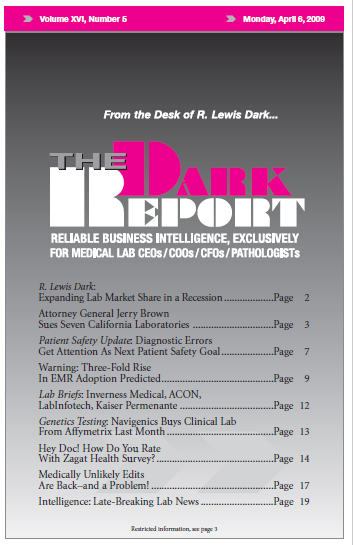CEO SUMMARY: Doctors are responding to news that up to $20 billion in federal funding is now available to help pay for their adoption of electronic medical record (EMR) systems. Demand for EMRs is expected to increase three-fold in the coming years. That means clinical labs and pathology groups must step up their EMR interface …
Warning: Three-Fold Rise In EMR Adoption Predicted Read More »
To access this post, you must purchase The Dark Report.


